We need your consent to use the individual data so that you can see information about your interests, among other things. Click "OK" to give your consent.
ASTM D6898-03(2010)
Standard Test Method for Evaluating Diesel Fuel Lubricity by an Injection Pump Rig
STANDARD published on 1.10.2010
The information about the standard:
Designation standards: ASTM D6898-03(2010)
Note: WITHDRAWN
Publication date standards: 1.10.2010
SKU: NS-36930
The number of pages: 8
Approximate weight : 24 g (0.05 lbs)
Country: American technical standard
Category: Technical standards ASTM
The category - similar standards:
Annotation of standard text ASTM D6898-03(2010) :
Keywords:
boundary lubrication, diesel fuel, friction, lubricity, wear, Boundary lubrication, Cetane number, Diesel engine fuel oils, Diesel performance, Friction/frictional properties--petroleum applications, Ignition--petroleum products, Injection pump rig, Lubricity/lubricating properties, Stanadyne model pumps, ICS Number Code 75.160.20 (Liquid fuels)
Additional information
| Significance and Use | ||||||||||||||
|
Diesel fuel injection equipment has some reliance on lubricating properties of the diesel fuel. Shortened life of engine components, such as diesel fuel injection pumps and injectors, has sometimes been ascribed to lack of lubricity in a diesel fuel. Pump Lubricity Value (PLV) test results generally rank fuel effects on diesel injection system pump component distress due to wear in the same order as Bosch, Lucas, Stanadyne, and Cummins in-house rig tests. In these fuel/hardware tests, boundary lubrication is believed to be a factor in the operation of the component. The PLV is sensitive to contamination of the fluids and test materials and the temperature of the test. Lubricity evaluations are also sensitive to trace contaminants acquired during test fuel sampling and storage. Test Methods D6078 and D6079 are two methods for evaluating diesel fuel lubricity. No absolute correlation has been developed between these two test methods, or between either of these methods and the PLV. The PLV may be used to evaluate the relative effectiveness of a fluid for preventing wear under the prescribed test conditions. This test method is designed to evaluate boundary lubrication properties. While viscosity effects on lubricity are not totally eliminated, they are minimized. This test can indicate whether or not an additive will improve the lubricity of a poor lubricity fuel. |
||||||||||||||
| 1. Scope | ||||||||||||||
|
1.1 This test method covers evaluating the lubricity of diesel fuels using a pump rig test and Stanadyne Model DB4427-4782 pumps. Note 1—Other pumps may be used if a correlation between pump performance factors and fuel lubricity has been developed. 1.2 This test method is applicable to any fuel used in diesel engines, including those which may contain a lubricity enhancing additive. 1.3 The values stated in SI units are to be regarded as standard. No other units of measurement are included in this standard. 1.4 This standard does not purport to address all of the safety concerns, if any, associated with its use. It is the responsibility of the user of this standard to establish appropriate safety and health practices and determine the applicability of regulatory limitations prior to use. Specific warning statements are given in Section 7. |
||||||||||||||
| 2. Referenced Documents | ||||||||||||||
|
Similar standards:
Historical
1.10.2010
Historical
1.5.2011
Historical
15.1.2014
Historical
1.6.2014
Historical
1.12.2012
Historical
1.5.2010
We recommend:
Technical standards updating
Do you want to make sure you use only the valid technical standards?
We can offer you a solution which will provide you a monthly overview concerning the updating of standards which you use.
Would you like to know more? Look at this page.


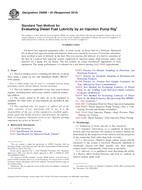
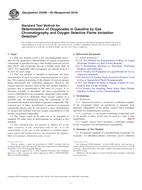 ASTM D5599-00(2010)..
ASTM D5599-00(2010)..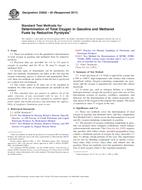 ASTM D5622-95(2011)..
ASTM D5622-95(2011)..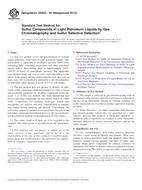 ASTM D5623-94(2014)..
ASTM D5623-94(2014).. ASTM D5705-14
ASTM D5705-14 ASTM D5708-12
ASTM D5708-12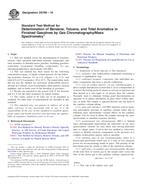 ASTM D5769-10
ASTM D5769-10
 Cookies
Cookies
